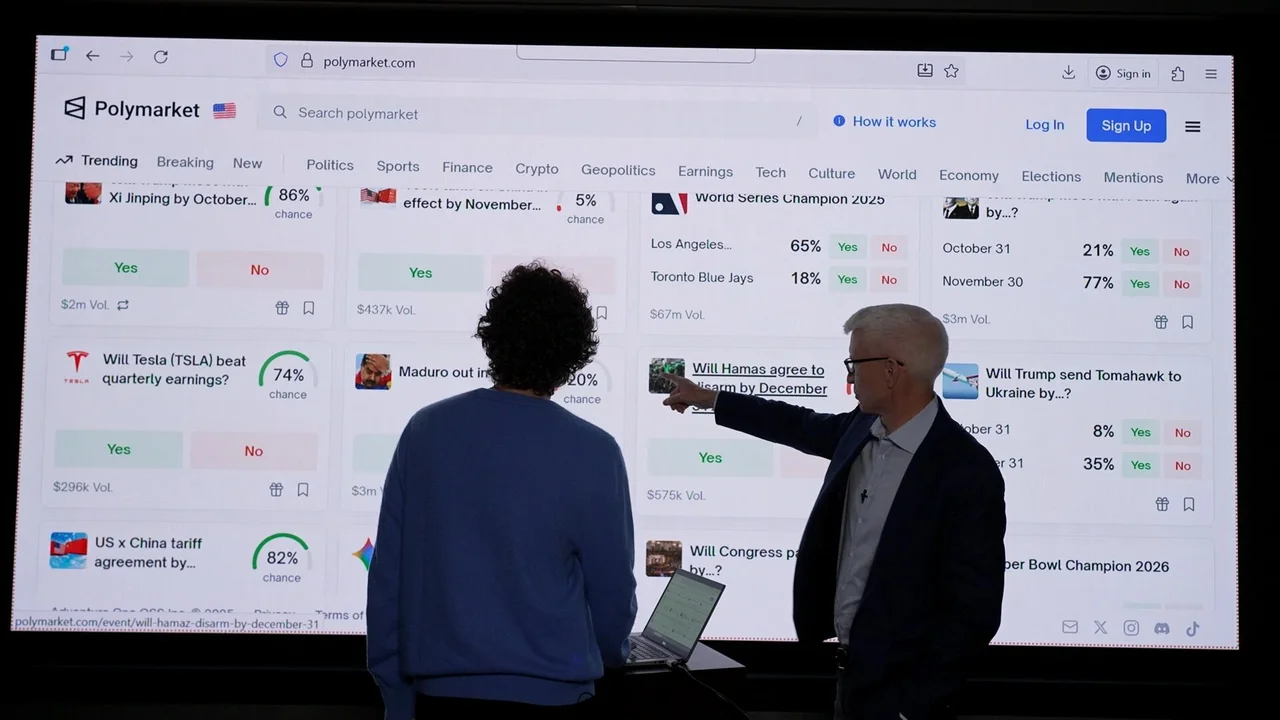Lessons From Ingvar Kamprad: The Man Who Built IKEA Without Borrowing a Dime

When you think of IKEA, you probably picture sleek, affordable furniture and giant warehouse stores filled with everything from bookshelves to meatballs. But behind this global empire is the incredible story of Ingvar Kamprad, the Swedish entrepreneur who turned a small mail-order business into the world’s largest furniture retailer—all without borrowing money.
Kamprad’s journey wasn’t just about business; it was about discipline, resourcefulness, and a deep understanding of consumer needs. His frugal lifestyle and financial wisdom played a crucial role in growing IKEA into the household name it is today.
Let’s dive into his background, the founding of IKEA, and the key financial lessons that made it all possible.
Humble Beginnings: Ingvar Kamprad’s Early Life
Ingvar Kamprad was born in 1926 in the small Swedish town of Älmhult. He grew up on a farm called Elmtaryd in the village of Agunnaryd—a name that would later inspire IKEA’s brand identity.
From a young age, Kamprad showed an entrepreneurial spirit. At just five years old, he started selling matches to neighbors. Realizing he could buy them in bulk at a lower price and sell them individually for a profit, he quickly learned the power of smart business decisions.
As he grew older, his ventures expanded. He sold fish, seeds, Christmas decorations, and even pens—anything he could get his hands on. This relentless drive to sell and make a profit would eventually shape his approach to business.
The Birth of IKEA
In 1943, at just 17 years old, Kamprad officially founded IKEA. The name came from his initials (I.K.), the farm he grew up on (Elmtaryd), and his hometown (Agunnaryd). Initially, IKEA was a mail-order business selling small household goods like picture frames and watches.
It wasn’t until 1948 that Kamprad introduced furniture into the catalog. The demand for affordable, stylish furniture was growing in post-war Europe, and he saw a golden opportunity. Instead of selling expensive, handcrafted pieces like traditional furniture stores, he focused on well-designed, low-cost alternatives.
One of Kamprad’s most game-changing ideas came in the early 1950s when he noticed how difficult and expensive it was to transport fully assembled furniture. The solution? Flat-pack furniture.
By designing products that could be disassembled and shipped in compact boxes, IKEA significantly cut costs, making stylish furniture more affordable for the masses. This approach not only revolutionized the industry but also became the foundation of IKEA’s global success.
How Kamprad Grew IKEA Without Borrowing Money
One of the most fascinating aspects of IKEA’s success is that Kamprad built it without relying on loans or outside investors. Here’s how he did it:
1. Focus on Cost Efficiency
From the very beginning, Kamprad kept costs low. IKEA’s self-service model, flat-pack design, and warehouse-style stores all reduced expenses. By passing these savings on to customers, IKEA was able to grow without needing outside funding.
2. Reinvest Profits Instead of Taking Loans
Instead of borrowing money for expansion, Kamprad reinvested IKEA’s earnings back into the business. This slow but steady approach ensured the company stayed financially independent.
3. Keep Supply Chains Lean
Kamprad avoided unnecessary middlemen and worked directly with manufacturers. This kept production costs down and allowed IKEA to maintain strong profit margins.
4. Expand Gradually and Strategically
Unlike companies that grow too fast and take on debt, IKEA expanded at a controlled pace. Each new store was carefully planned to ensure profitability before moving on to the next location.
5. Maintain Financial Discipline
Even as IKEA became a global giant, Kamprad’s financial discipline never wavered. He famously reused tea bags and encouraged employees to turn off lights when leaving rooms. While these habits may seem extreme, they reflected his deep belief in frugality—a mindset that helped IKEA maintain long-term stability.
Key Life Lessons from Ingvar Kamprad
Kamprad’s success wasn’t just about smart business moves. His values and philosophies played a huge role in shaping IKEA. Here are some of the biggest lessons from his life:
1. Simplicity is Key
Kamprad believed in keeping things simple—both in business and life. This philosophy was reflected in everything from IKEA’s minimalist designs to his own lifestyle. Unlike most billionaires, he drove an old Volvo, flew economy class, and preferred budget hotels over luxury accommodations.
2. Learn from Mistakes and Adapt
IKEA faced several challenges, including supplier boycotts and legal battles. Instead of backing down, Kamprad adapted. When Swedish furniture manufacturers boycotted IKEA in the 1950s, he turned to suppliers in Poland—one of the first steps in making IKEA a global business.
3. Never Stop Innovating
From flat-pack furniture to self-service stores, Kamprad always looked for ways to improve. He wasn’t afraid to change IKEA’s model if it meant better efficiency and lower costs for customers.
4. Know Your Customers
Kamprad understood that people wanted affordable yet stylish furniture. Instead of catering to the wealthy, he focused on everyday consumers, proving that great design doesn’t have to be expensive.
5. Frugality Leads to Strength
Even as one of the richest men in the world, Kamprad never wasted money. His belief in cost-cutting allowed IKEA to keep prices low while staying profitable—a principle that helped the company grow without taking on debt.
IKEA’s Legacy and Kamprad’s Lasting Influence
By the time of Kamprad’s passing in 2018, IKEA had become a global phenomenon with over 400 stores in more than 50 countries. The company’s annual revenue exceeded $40 billion, making it the world’s largest furniture retailer.
Kamprad’s influence is still felt in IKEA’s business model today. His principles of affordability, efficiency, and customer focus continue to shape how the company operates.
Even in his final years, Kamprad remained deeply involved in the business, always pushing for new ways to improve. His legacy is a testament to what can be achieved through vision, discipline, and smart financial management.
Final Thoughts
Ingvar Kamprad’s story is proof that you don’t need deep pockets or big loans to build a global empire. His disciplined approach to spending, commitment to simplicity, and deep understanding of consumer needs made IKEA a success without ever relying on outside investors.
For entrepreneurs, Kamprad’s life offers powerful lessons:
✔ Keep things simple
✔ Stay frugal and reinvest profits
✔ Adapt to challenges and keep innovating
✔ Know your customers better than anyone else
✔ Grow strategically without taking on unnecessary debt
In a world where businesses often chase fast growth through heavy borrowing, Kamprad’s journey reminds us that sometimes, slow and steady really does win the race.
Further reading: Going Against The Grain: ED Stack's Unusual Business Strategy That Made Him A Billionaire
Ingvar Kamprad was a Swedish entrepreneur and the founder of IKEA. He started the company in 1943 as a mail-order business before expanding into furniture. His innovative approach, including the introduction of flat-pack furniture, helped IKEA grow into the world's largest furniture retailer.
Kamprad focused on cost efficiency, reinvested profits instead of taking loans, avoided unnecessary middlemen, expanded strategically, and maintained financial discipline. His frugal approach allowed IKEA to grow without relying on external investors or debt.
Kamprad had an entrepreneurial spirit from a young age, selling matches, fish, and other small goods. In 1943, he founded IKEA and later introduced affordable, stylish furniture to meet consumer demand in post-war Europe, revolutionizing the furniture industry.
Flat-pack furniture, introduced by IKEA in the 1950s, allowed products to be disassembled and shipped in compact packaging. This innovation reduced transportation costs and made stylish furniture more affordable, contributing significantly to IKEA's success.
Kamprad's key financial lessons include reinvesting profits instead of taking loans, maintaining strict cost control, embracing frugality, expanding strategically, and focusing on customer needs. These principles helped IKEA grow sustainably without financial risk.
Kamprad's frugality was reflected in IKEA's cost-effective business model, including minimalist store designs, cost-saving supply chain strategies, and low operational expenses. His philosophy ensures that the company remains affordable while maintaining profitability.
When Swedish manufacturers boycotted IKEA in the 1950s, Kamprad sourced furniture from Poland, reducing costs and expanding globally. His ability to adapt to challenges and find innovative solutions played a key role in IKEA's long-term success.
IKEA is focused on sustainability by committing to reducing greenhouse gas emissions, transitioning to a circular business model, using sustainable materials, and investing in renewable energy. These efforts align with Kamprad's cost-conscious and efficient approach.
Kamprad valued simplicity in both life and business. He believed that straightforward designs, efficient operations, and avoiding unnecessary expenses helped create a strong, sustainable company. This philosophy is evident in IKEA's affordable, functional products.
Even after Kamprad's passing in 2018, his principles continue to influence IKEA. The company maintains its focus on affordability, efficiency, and customer-centered innovation while expanding globally and embracing sustainability efforts aligned with his vision.

square.jpg)










